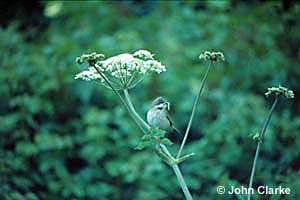KEMERTON CONSERVATION TRUST







|
'Conserving wildlife and ancient landscape' |
Registered Charity Number: 702488 |
Background
At Kemerton, early conservation work appeared to be unable to prevent local populations following national trends. However, since the mid-1990’s various changes in agricultural practices at Kemerton have apparently coincided with a reversal in fortune of several species of bird. Personal observations and comparisons with work carried out in the early 1980’s gave cause for optimism and in 1998 population-monitoring trials were started. Initially the trials focused primarily on two typical local species – the Skylark and the Yellowhammer – using a strict methodology to obtain an annual ‘snapshot’ population assessment. Restrictions of time and resources limited the main effort to these two species. However, it was possible to monitor additional species in a less formal, but nonetheless consistent way. Thus species such as Whitethroat and Linnet were included – and it is on these four species that this report focuses. In 2000 Kemerton Estate entered into a whole-farm Countryside Stewardship Agreement and as part of that scheme began implementing changes to the management of field margins and of hedgerows. These were in addition to earlier changes introduced by the farm manager since the mid-1990’s. The changes at Kemerton that may have most improved the wildlife include a general increase in the ‘volume’ of each hedgerow (height and width), stricter control of chemical drift into field margins and hedge bottoms, and the provision of rough grass margins. While these changes were taking place at Kemerton, since 1992 The Allington Research and Educational Trust had been monitoring similar changes taking place on their farm at Loddington. Since 1994 the British Trust for Ornithology has been monitoring farmland bird populations on a regional and national basis. In 2000 Kemerton Conservation Trust, as part of a much farm-wide monitoring scheme included monitoring populations of the four ‘target’ bird species. Kemerton’s results could then be compared with trends identified locally by Loddington and nationally by the BTO. Close comparison of the local populations would not be practical: varying agricultural practices and differing amounts of available wildlife habitat would be affecting population numbers. Results Trends recorded
2. Skylark
3. Whitethroat
4. Yellowhammer
Conclusions
|

|
'Conserving wildlife and ancient landscape' Registered Charity Number: 702488 |
